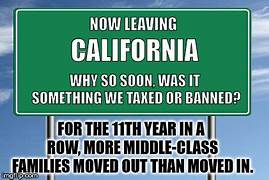To create jobs it takes money. To educate your children, it takes money. To pay rent, a mortgage and the water bill, takes money. Government action based on ideology, not science is going to cost those staying in San Fran $5.8 Billion a year—for the added costs of energy when we do away with the use of safe, clean, efficient, natural gas.
“Electrifying homes currently using natural gas could go a long way in reducing San Francisco’s greenhouse gas emissions, but the effort is no small undertaking and could cost up to $5.9 billion, according to a new report.
About 38 percent of San Francisco’s greenhouse gas emissions comes from natural gas combustion in buildings. In residential buildings, the largest use of natural gas is for appliances like water heaters, furnaces, ovens and laundry dryers.
That is just for one city. Imagine the costs statewide as city after city and finally the State outlaws natural gas—we are talking in the neighborhood of $00 billion a year add to the cost of families and businesses. This is one way to force the middle class out of the State—make it too expensive to live here. Oh, the replacement? Solar and wind turbines—unreliable and very costly. Worse, you would have to fill all available land in the state with solar farms and wind turbine farms—no room for much else. I would expect Gov. Abbott and the State of Texas will donate heavily to keep Newsom in as Governor—the longer he and the Democrats control California, the more jobs Texas will have—and the more middle class will move to that State. It would be a great investment of Texas to support Newsom.
Eliminating natural gas in housing could cost $5.9B

City weighs options including mandatory replacement of appliances in homes
Joshua Sabatini, SF Examiner, 4/28/21
Electrifying homes currently using natural gas could go a long way in reducing San Francisco’s greenhouse gas emissions, but the effort is no small undertaking and could cost up to $5.9 billion, according to a new report.
About 38 percent of San Francisco’s greenhouse gas emissions comes from natural gas combustion in buildings. In residential buildings, the largest use of natural gas is for appliances like water heaters, furnaces, ovens and laundry dryers.
Supervisor Gordon Mar, who requested the budget analyst report, said there is no way for The City to meet its climate goals without electrifying its residential buildings. San Francisco hopes to become net-zero carbon by 2045.
“Electrifying our homes is a monumental challenge and an environmental necessity,” Mar said.
The “key barrier” to achieving an electric retrofit of existing residences is the “financial burden,” the report said, but The City’s greenhouse gas emissions “could be significantly reduced.”
“This could be accomplished by compelling all property owners by legal mandate to replace all gas appliances with electric at their expense,” the report said. “Rebates and low interest loans could be used as tools to make mandated retrofits less financially burdensome to property owners. Partial or full city funding of these costs is another approach that could be used.”
The estimated cost of an electrical retrofit of appliances in residences ranges from a low of $14,363 per housing unit up to $19,574 for multi-family units and $34,790 for single-family homes, the report said. Costs include disposal of old appliances, purchase of new appliances, labor and electrical panel upgrades.
In San Francisco, an estimated 240,231 housing units, about 61 percent of the total housing stock, use natural gas for some or all of the appliances. The total includes 76,470 single-family homes and 163,761 multi-family homes. That means the cost to swap out natural gas appliances for electric is estimated at between $3.5 billion and $5.9 billion.
Mar has requested a hearing on the report to “assess the scope of this challenge and consider strategies both near and long term we can use to address it.” A date has yet been set. According to the Department of the Environment, natural gas consists mostly of methane, “a greenhouse gas that is 86 times more potent than carbon dioxide.”
There are a number of options The City could entertain. The main variables for a residential electrification effort are cost, who would shoulder the cost and how fast San Francisco wants to reduce greenhouse gas emissions.
The report suggests The City could implement requirements that there is an electric appliance retrofit on all residences at the time of a sale or when gas-fueled appliances will have to be naturally replaced at the end of their lifetime. Another possibility is imposing a fee on natural gas buildings that would be lifted once they convert.
“While each of these approaches would help reduce San Francisco’s greenhouse gas emissions, their impact would take decades to achieve,” the report said.
A way to speed up the effort is having The City fund a retrofitting program through issuing debt.
The electrification effort may also mean more jobs.
The report estimated about 423 to 774 construction jobs could be created annually over a 25-year period.
Charles Sheehan, a spokesperson for the Department of the Environment, said that the report “is an important addition to the conversation about decarbonizing San Francisco’s buildings.”
He said that residential buildings are responsible for 23 percent of The City’s greenhouse gas emissions.
“The City has a goal of carbon neutrality by 2045,” Sheehan said. “To get there, we know we have to decarbonize our residential buildings and transition off of natural gas in favor of renewable energy.”
The department is having ongoing conversations with affordable housing providers, labor leaders and others about how to achieve this goal.
“We will need an equity-first approach to provide incentives and programs that will facilitate this transition first for those that can least afford it,” Sheehan said. “And from there, we need to develop comprehensive policies, incentives, and programs to achieve that transition throughout The City. Setting up this environmental infrastructure will guide the development of a mandate.”



